Finding the best place to get an alignment for your vehicle is essential to ensure that your car runs smoothly and efficiently.
Wheel alignment is the process of adjusting the angles of the wheels so that they are perpendicular to the ground and parallel to each other. Proper wheel alignment can help extend the life of your tires, improve fuel efficiency, and enhance the overall performance of your vehicle.
There are several factors to consider when choosing the best place to get an alignment. One of the most important factors is the expertise and experience of the technicians.
A qualified technician with extensive experience in wheel alignment can accurately diagnose and fix any alignment issues that your vehicle may have.
Additionally, it is important to choose a service center that uses state-of-the-art equipment and technology to ensure that your vehicle is aligned correctly.
Another factor to consider is the price of the alignment service. While it is important to find a service center that offers affordable prices, it is equally important to ensure that the quality of service is not compromised.
It is recommended to compare prices and services offered by different service centers before making a decision.
Overall, finding the best place to get an alignment can help you save money in the long run by preventing premature wear and tear on your tires and ensuring that your vehicle runs as efficiently as possible.
Signs of Alignment Issues
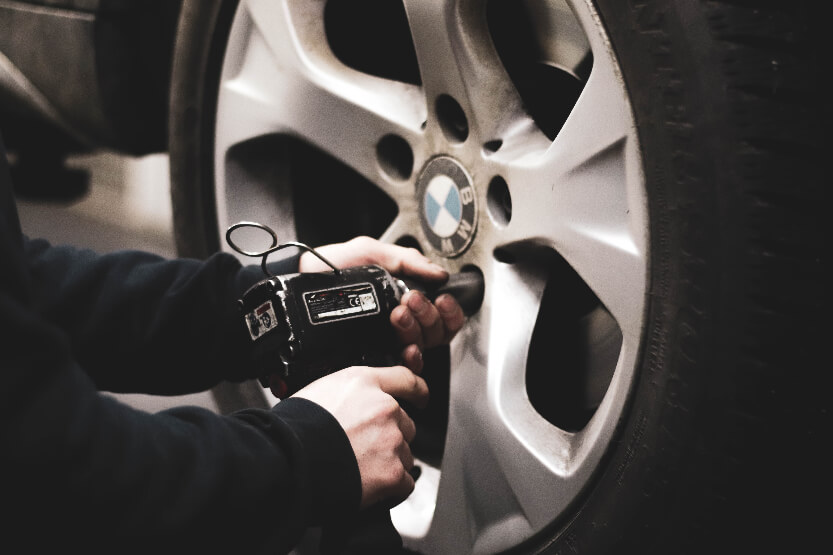
When it comes to vehicle maintenance, alignment problems can have a significant impact on the overall performance of a car. Here are some common signs that indicate your car may have alignment issues:
Uneven Tire Wear
One of the most noticeable signs of alignment problems is uneven tire wear. This can be caused by a variety of factors, such as driving on rough roads or hitting a curb. Uneven tire wear can lead to reduced tire life and increased costs in the long run.
Steering Wheel Misalignment
Another common sign of alignment issues is steering wheel misalignment. If the steering wheel is not centered or is off-center, it can indicate that there is an alignment problem. This can also lead to difficulty in steering and reduced vehicle performance.
Vehicle Pulling and Performance Issues
If a car is pulling to one side while driving, it can be an indication of an alignment problem. This can also lead to uneven tire wear and reduced vehicle performance. Vibration while driving is another sign that your car may have alignment problems.
It is important to address alignment problems promptly to ensure vehicle safety, reduced repair costs, and an enhanced driving experience. If you notice any of these signs, it is recommended to take your car to a reputable mechanic to have it inspected and aligned if necessary.
The Alignment Process
Getting a wheel alignment is a crucial maintenance task that helps ensure your vehicle’s tires wear evenly and last longer. The alignment process involves adjusting the angles of the wheels to meet the manufacturer’s specifications. Here are the three main steps of the alignment process:
Pre-Alignment Inspection
Before the alignment process can begin, a technician will perform a pre-alignment inspection. This step involves checking for any damaged or worn parts that could affect the alignment readings.
The technician will also check the tire pressure and tread depth to ensure they are within the manufacturer’s recommended specifications. This inspection helps ensure that the alignment readings are accurate and that any necessary repairs are made before the alignment process begins.
Computerized Alignment Technology
Today, most alignment machines use computerized wheel alignment technology to measure the angles of the wheels. The technician will attach sensors to each wheel and use the alignment machine to take precise measurements of the camber, caster, and toe angles.
The computer then calculates the optimal alignment settings based on the manufacturer’s specifications and displays the readings on a screen.
Making the Adjustments
Once the alignment readings have been taken, the technician will make the necessary adjustments to the wheels.
This step involves adjusting the camber angle to ensure the wheels are perpendicular to the road, fine-tuning the caster angle for stability and steering ease, and adjusting the toe angle to ensure the wheels are parallel to each other.
The technician will use specialized tools to make these adjustments and will continue to take measurements until the alignment readings are within the manufacturer’s recommended specifications.
Overall, the alignment process is a crucial maintenance task that helps ensure your vehicle’s tires wear evenly and last longer. By following the manufacturer’s recommended alignment settings, a technician can help improve your vehicle’s handling and steering, reduce tire wear, and improve fuel efficiency.
Choosing the Right Service Center

When it comes to getting a wheel alignment, choosing the right service center is crucial. Not all service centers are created equal, and a poor alignment job can lead to uneven tire wear, reduced fuel efficiency, and even safety issues.
Finding a Qualified Technician
The first step in choosing the right service center is finding a qualified technician. Look for a service center that employs ASE-certified auto technicians.
ASE certification is a mark of excellence in the automotive industry and indicates that the technician has passed a rigorous exam and has at least two years of professional experience.
Additionally, look for a service center that has experience in performing wheel alignments. A service center that specializes in alignments will have the expertise and equipment necessary to perform the job correctly.
Understanding Alignment Service Options
When choosing a service center, it’s important to understand the different alignment service options that are available. Some service centers offer a lifetime warranty on their alignment services, while others offer a limited warranty.
A lifetime warranty means that the service center will perform free alignments for the life of the vehicle, while a limited warranty may only cover a certain number of miles or a certain period of time.
It’s also important to understand the different types of alignment services that are available.
Two-wheel alignments are less expensive than four-wheel alignments, but they only adjust the front wheels. Four-wheel alignments are more comprehensive and adjust all four wheels, but they are more expensive.
In conclusion, choosing the right service center is essential when it comes to getting a wheel alignment. Look for a service center that employs ASE-certified auto technicians and has experience in performing wheel alignments.
Additionally, understand the different alignment service options that are available, including warranties and the difference between two-wheel and four-wheel alignments.
Advanced Alignment Considerations
Alignment and Advanced Driver Assistance Systems
As vehicles become more advanced, so do their safety systems. Advanced Driver Assistance Systems (ADAS) are becoming more common and are designed to help drivers stay safe on the road.
These systems rely on sensors, cameras, and radars to detect potential hazards and alert drivers to take action. However, these systems can be impacted by wheel alignment.
Improper alignment can affect the accuracy of these sensors and cameras, which can lead to false alerts or even failure to detect hazards.
For this reason, it is important to ensure that the alignment is properly calibrated for ADAS-equipped vehicles. This requires specialized equipment and training, so it is important to choose a shop that is equipped to handle these systems.
Another important consideration is the steering angle sensor. This sensor is responsible for measuring the steering angle and communicating it to the vehicle’s computer.
If the steering angle sensor is not properly calibrated, it can cause the ADAS systems to malfunction. Therefore, it is important to choose a shop that has the equipment and expertise to properly calibrate the steering angle sensor.
The Impact of Suspension Components on Alignment
Suspension components, such as shocks, struts, and rear suspension, can also have an impact on wheel alignment.
If these components are worn or damaged, they can cause the vehicle to pull to one side or the other, even if the wheels are properly aligned. This can also cause premature tire wear and reduce the overall handling and stability of the vehicle.
Therefore, it is important to have the suspension components inspected and replaced if necessary when getting an alignment. A reputable shop will not only perform the alignment but also inspect the suspension components to ensure they are in good condition.
In conclusion, when choosing a shop for wheel alignment, it is important to consider the impact on advanced safety systems and suspension components.
By choosing a shop that is equipped to handle these systems and has the expertise to properly inspect and replace suspension components, drivers can ensure that their vehicle is safe and performing at its best.
Maintenance and Care Tips

Regular Alignment Checks
Regular alignment checks are essential to ensure that your vehicle’s wheels are pointing straight ahead. It is recommended to have your alignment checked every 6,000 miles or every six months, whichever comes first.
Regular alignment checks can help prolong the life of your tires, improve fuel economy, and prevent your vehicle from pulling to one side.
To check your vehicle’s alignment, take it to a reputable auto care shop or tire center.
They will use specialized equipment to measure the angles of your wheels and make any necessary adjustments to align them properly. Remember, alignment is a complex process, and it is best to leave it to the professionals.
Tire Maintenance and Air Pressure
Proper tire maintenance and air pressure are crucial to ensure that your vehicle’s alignment remains in good condition. It is recommended to check your tire pressure at least once a month, as underinflated or overinflated tires can cause your vehicle to pull to one side and affect your alignment.
Make sure to also inspect your tires for any signs of wear and tear, such as uneven wear patterns or bulges. Worn tires can also affect your alignment and lead to further problems down the road.
Additionally, make sure to rotate your tires regularly to ensure even wear and prolong their lifespan. Consult your vehicle’s owner manual for the recommended tire rotation schedule.
By following these simple maintenance and care tips, you can help ensure that your vehicle’s alignment remains in good condition and prolong the life of your tires.
In Summary
When it comes to getting a wheel alignment, there are several options available. The best place to get an alignment will depend on factors such as location, cost, and quality of service.
One option is Firestone Complete Auto Care. They offer wheel alignment services and have locations throughout the United States. Their services are performed by experts who ensure that tires meet the road at the right angle and wheels are pointing straight.
Another option is Goodyear Auto Service. They provide four-wheel alignment services and recommend getting an alignment at least once a year. They also offer front-end alignment services and can perform alignments when installing a new set of tires.
AutoZone is another option for getting a wheel alignment. They offer a step-by-step guide for DIY alignment and provide tips for ensuring accuracy. They suggest using a level garage floor and marking a reference on the tires to ensure proper alignment.
Black’s Tire & Auto Service is a highly rated option on Yelp. They offer tire alignment services and have a reputation for providing great service at reasonable rates.
It is recommended that drivers visit their mechanic for a wheel alignment every 10,000 miles. However, this can vary based on the condition of the roads and driving habits.
If roads are more rough and have many potholes, then the service may need to be performed more frequently (every 5,000 miles).
Overall, the best place to get a wheel alignment will depend on individual needs and preferences. Drivers should consider factors such as cost, location, and quality of service when choosing a provider.


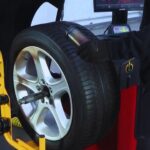
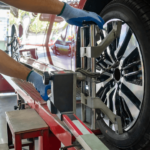
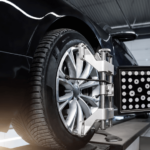
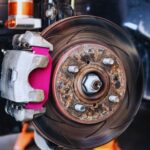

![Read more about the article Does Fix-a-Flat Work? [Is Fix-a-Flat Effective?]](https://roadsumo.com/wp-content/uploads/2021/11/does-fix-a-flat-work-300x200.jpg)
![Read more about the article Nail in Tire [How to Repair? What to Do?]](https://roadsumo.com/wp-content/uploads/2021/04/nail-in-tire-300x200.jpg)
